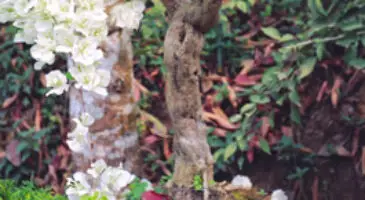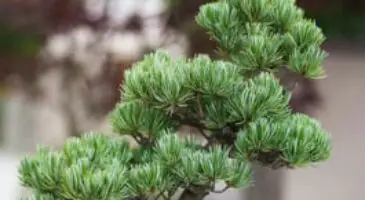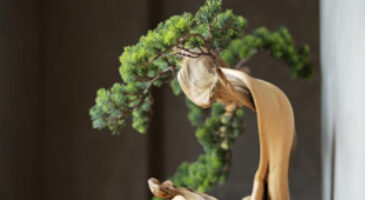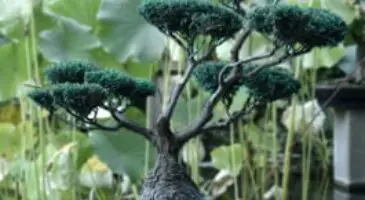Table of Contents
Most people will say no when someone asked them, “Can bonsai trees live underwater?” Even though bonsai trees need water to survive as much as other plants, living underwater will only drown them.
They will be unable to breathe through their leaves’ stomata, the organs that should be the places where they inhale and exhale. As a result, bonsai trees will experience oxygen starvation in their roots. Such conditions are dangerous. Hence, no wonder many people doubt if they can live underwater.
Some of these people have experience in placing and planting bonsai trees underwater, and they succeed. With the right tools and nutrients, your bonsai trees will possibly grow in underwater conditions.
First of all, let us answer the question: Can a bonsai tree survive underwater?
Can a bonsai tree survive underwater
Bonsai trees need water for supply, just like other plants. Any water will help in nurturing bonsai’s growth. They can consume tap water, and, in some cases, they even feed on rainwater.
Still, the question is, can bonsai trees live underwater? In other words, can they survive underwater?
There are no pieces of evidence if they can sustain their lives underwater. One clear answer to such questions is that the bonsai trees will die if you place the whole of their bodies underwater.
If you’ve ever found pictures of bonsai trees surviving underwater in a whole condition, those would be imaginary pictures. Those pictures won’t work in the real world. The overflooding roots are often the reasons why can’t a whole bonsai tree survive underwater.
Can bonsai trees grow underwater
You may argue that some people can “grow” their bonsai trees underwater. You may also believe those situations are not imaginary. Thus, it leads to the next question, which is, “Can bonsai trees grow underwater?”
While overflooding roots can be the most frequent reason why can’t you place bonsai trees underwater and then hoping those plants survive, there are ways to make them grow in the condition where they can’t usually thrive.
The first thing you need to do is to make sure the bonsai trees’ roots aren’t 100% submerged under the water. Else, they may suffer from root rot, a disease that happens to plants living in an overly wet area.
We don’t recommend you to prune aggressively on root rot trees even though this way can be possible. After all, using an aggressive approach to prune the bonsai trees can worsen your bonsai trees’ health.
If you insist on planting bonsai trees underwater, you’ll need to fake the bonsai trees. If you are ready to create the aqua version of bonsai plants, you’re going to prepare the tools.
Fish tanks (or aquariums), driftwoods, and mosses are among the things you’ll need to make the aqua bonsai plants – the types of bonsai tree that will survive in underwater conditions no matter the species and the percentages of the body inside the water.
Can you put bonsai in a fish tank
True to its name, fish tanks are small places inside a house where fishes and other aquatic beings swim and live. However, there are times when you observe bonsai plants to be present in a fish tank.
Bonsai’s presence in fish tanks adds to the aesthetic values the tanks have. Even though you can’t place real bonsai trees or plants in a fish tank to save them from drowning, you can put the bonsai’s aqua version.
In many cases, you can use living tree logs as the branches for the aqua bonsai trees. These living trees can be decent alternatives to driftwoods to make your fish tank environments appear closer to nature. Styles, sizes, and shapes are the three most important factors when choosing trees for your bonsai in a fish tank.
Branched and tabletop bonsai trees are two of the most common styles for bonsai trees inside a fish tank. We recommend you to try on the tabletop versions if this is the first time you experiment with bonsai trees in an underwater condition as in a fish tank.
You can craft more diverse types of mosses and plants when you opt for the tabletop bonsai trees. Unlike the branched trees, you don’t need to glue the trees or use any fishing lines to attach the mosses and the plants. All you need to do with your tabletop bonsai trees are gently pressing them into the places you want to place them.
How to make underwater bonsai tree
Now that you’ve known the types of tree logs that you need to create to make the underwater models of bonsai trees, you may want to dig deeper in making them “stand” as if they have roots like bonsai trees that don’t “live” underwater.
Other bonsai trees that live outside the underwater areas have roots and branches to sustain their lives. The aquatic bonsai trees are different in that they rely on rock bottoms. If the rock bottoms are not solid enough, the underwater version of the bonsai trees will float.
Floating bonsai trees will appear strange inside fish tanks or aquariums. Therefore, they can damage the appearance of your fish tanks. If your fish tanks have other sea creatures in them, chances are they will get disturbed. Such situations will impact the lifespans of other sea creatures living in the same fish tank.
The good news is that there are still ways for you to make underwater bonsai trees even if you don’t have the rock bases. Waterlogging becomes an integral process other than substituting small rocks for the rock bases. Boiling small bonsai trees will help in speeding up the waterlogging processes.
There are some alternatives you can choose to do in making an underwater bonsai tree. First, you can place the trees in a bucket of water with a rock on its top. Hold them under a sturdy surface. Then, wait for approximately 1-3 weeks to remove the bases and see if the trees don’t float. After that, waterlog the bonsai trees when everything is okay.
If you don’t want to wait, you can place a few rocks inside the fish tank first to make the foundations for the roots. Then, place the plants at the center of the bases. Another alternative is to directly plant the trees inside the fish tanks and glue the bottom parts of the trees using Gel Type Gorilla Glue or similar types of glue.
How to make bonsai driftwood for aquarium
While you can make underwater bonsai plants with living tree logs, they can be risky when sea creatures accidentally consume them. Bonsai driftwoods won’t pose the same degrees of risks while still adding the extra aesthetic value to the aquarium or fish tanks you use to make a living underwater bonsai plant.
It’s easy to create the branches for the living underwater bonsai plant using bonsai driftwoods once you know the “how-tos” in creating and treating them. In crafting the woods, you’ll need to prepare the driftwoods, saplings, cutters, waxes, and a stable natural flat spot as the worktop for the driftwoods.
Next, put a sapling of (preferably) California junipers on the driftwood piece. Measure their tips using a knife tip so you can later remove them and set them aside. Attach the saplings to the driftwoods using as few brass screws as possible. Fill the gaps with waxes if you noticed the gaps between the screws. After that, wrap the tapes around the saplings.
In treating the bonsai driftwoods and the saplings, you need to water them with a fertilizer that has been dissolved in water first before beginning the continual treatments. As for the continuous treatment, you’ll need to rinse them under tap water for a while, put them inside the fish tank or aquarium, and soak them in cool water for 3-5 days.
Best moss for bonsai tree aquarium
Mosses are more practical to make and adjust if you compare them to other rhizome-based underwater bonsai plants such as Anubias nana petite and Bucephalandra. There can be many types of moss that fall into the best categories for the bonsai tree aquarium. Moss balls are some of them.
Moss balls are sphere-form algae that grow less than 5 mm per year. These balls are easy to plant, even if all you do is throw them inside the aquarium. Other types of moss that are best for aqua bonsai trees are Christmas and Java mosses.
Christmas mosses typically have a bold green hue. You can grow them in any aquarium size, making them recommendable for beginners. Aquascape rocks and driftwoods are some of the most common “accessories” for Christmas mosses.
Java mosses are mosses that can live on moderate levels of lights and water inside an aquarium. Other than stones, you can attach them to wooden surfaces.
While “no” is the simple answer to, “Can bonsai trees live underwater?” question, you can create aqua bonsai trees as long as you have the tools you need. So, there are still hopes for you to make them survive inside aquariums, fish tanks, or other similar water bodies.



